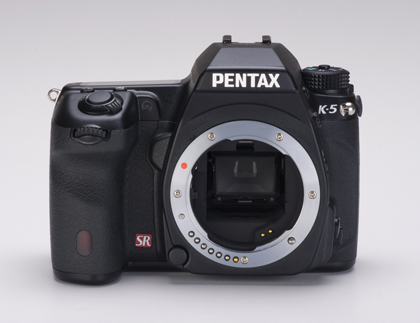Why you can trust TechRadar
At lower sensitivities images from the K-5 are detailed and clean, and only require a touch of sharpening to get them to their best.
Though JPEG output from the camera is satisfactory, it's clear that images with more intricate details are better handled by more careful noise reduction and sharpening using raw files as a starting point.
Predictably, noise rises and image quality drops as sensitivity increases, but this happens at a steady pace with no obvious 'cut-off' point in terms of quality. The maximum ISO 51,200 setting is certainly ambitious, but even with the kind of noise it produces its results could potentially be fine for smaller prints, particularly after noise reduction.

The only time its results surpass this level is when there's plenty of light, although realistically there's little reason why a sensitivity setting of ISO 51,200 would ever be called upon in such conditions.
An interesting feature on the K-5 is that each separate sensitivity setting may be assigned a different level of noise reduction. One option is simply to increase this in line with sensitivity, which deals with the worst noise patterning, but tests performed using the three different levels of correction available suggest that this is perhaps better tailored specifically to the scene being shot rather than the to the sensitivity itself.
It's clear that the effects of the Pentax K-5 noise reduction are dependent on the subject details and how well they have been lit, and better-illuminated scenes will tolerate a greater level of noise reduction before too much detail is compromised. In any case, it's more likely that for such critical work this option is likely to be bypassed in favour of raw post-production where more care and time may be taken.
Although some Pentax DSLRs in the past had a tendency for slight underexposure in certain conditions, that doesn't appear to be the case with Pentax K-5 images. Even when faced with harsh backlighting, the 77-segment metering system is not swayed into underexposing the main subject, choosing instead to give a more even balance, even if it comes at the expense of highlight detail.
Sign up for breaking news, reviews, opinion, top tech deals, and more.
Pentax's in-camera Lateral Chromatic Aberration Adjustment option removes the most obvious coloured fringes (but without completely eliminating them), while the Distortion Correction option available from the same menu is also effective, though the strength of its correction – which cannot be adjusted – proves to be a little overzealous at times, resulting in some unfortunate pincushion distortion.
Both options add around two seconds of processing time per image, and so are perhaps best left deactivated until needed.
One particular headache for any digital camera is the accuracy of its auto white balance system under artificial light, mainly due to the wealth of different lighting sources, each with their own characteristics. Yet, even in this troubled area the Pentax K-5 exceeds expectations, with an impressive level of accuracy under a range of artificial lighting, even under combinations of tungsten and fluorescent sources.
The system does have an overall tendency to lean slightly towards the neutral rather than the faithful, which can be problematic if the warmth of a scene is to be retained, but a Colour Temperature Enhancement option is on hand to remedy this. The system also sometimes struggles under a mixture of natural and artificial light to produce a rather over-compensatory bluish cast, but realistically we should expect the odd error when there are so many combinations of lights under which it may ever be used.
In daylight and other more typical conditions there's little to complain about, and with the default Bright colour option colours are generally pleasing and life-like.
Current page: Performance
Prev Page Build quality and handling Next Page Image quality and resolution